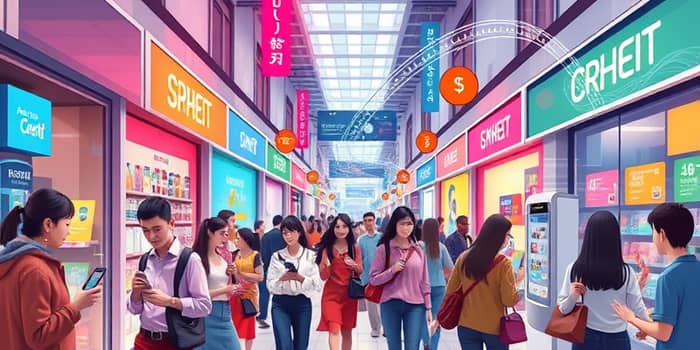
In 2025, the convergence of continued surge in consumer credit growth and retail sales momentum is reshaping the market landscape. Retailers and consumers alike are navigating a dynamic environment where access to credit is both a lifeline and a catalyst for innovation. This article explores the drivers, impacts, and strategies behind this phenomenon, offering actionable insights for sustainable success.
U.S. retail sales are forecast to reach $5.42–$5.48 trillion in 2025, reflecting a solid 2.7–3.7% increase over 2024’s $5.29 trillion. Non-store and online channels are set to grow 7–9% year-over-year, generating $1.57–$1.6 trillion.
These figures underscore the ongoing shift toward digital channels and the critical role of financing options in supporting consumer purchasing power.
Consumer debt rose by nearly half a trillion dollars in 2024, a trend expected to continue into 2025 as households manage pressures from rising inflation and wages through borrowing.
This expansion highlights the delicate balance between encouraging consumption and maintaining credit quality.
young, single adult consumers often use credit to fund social experiences and maintain lifestyles amidst economic uncertainty. In contrast, married households with children view credit as a strategic buffer against unexpected expenses.
Understanding these behaviors helps retailers tailor credit offerings and loyalty programs for maximum engagement.
Retailers are innovating to capture consumer demand and differentiate from emergence of buy-now-pay-later alternatives. Key tactics include:
Acquisitions of technology and logistics startups enable seamless omnichannel experiences and deeper consumer engagement.
The broader U.S. economy in early 2025 benefits from low unemployment and modest real wage gains, yet policy uncertainty and high interest rates pose challenges. Consumer spending remains resilient, but over-reliance on credit could lead to elevated non-performing loans if macro conditions deteriorate.
Retailers must watch for signs of tightening credit conditions and rising debt-service burdens, which could dampen demand and squeeze margins.
Consumers should monitor their credit utilization to maintain healthy scores, evaluate rewards programs to maximize value without unnecessary spending, and plan for interest rate fluctuations by prioritizing fixed-rate financing.
Retailers should offer tiered credit products that match customer risk profiles and spending patterns, leverage advanced analytics to personalize credit offers and reduce default risk, and integrate financial wellness resources into loyalty platforms to foster long-term relationships.
By focusing on driving long-term economic resilience and growth, stakeholders can harness credit expansion to drive innovation and market entry while safeguarding financial health.
The synergy between consumer credit growth and retail sector expansion is a defining feature of the 2025 landscape. By embracing strategic credit solutions, investing in technology, and promoting responsible borrowing, retailers and consumers can thrive in an environment of sustainable, credit-driven consumption models. The road ahead promises both opportunity and risk, but with thoughtful planning, the retail industry can harness this momentum for enduring success.
References













